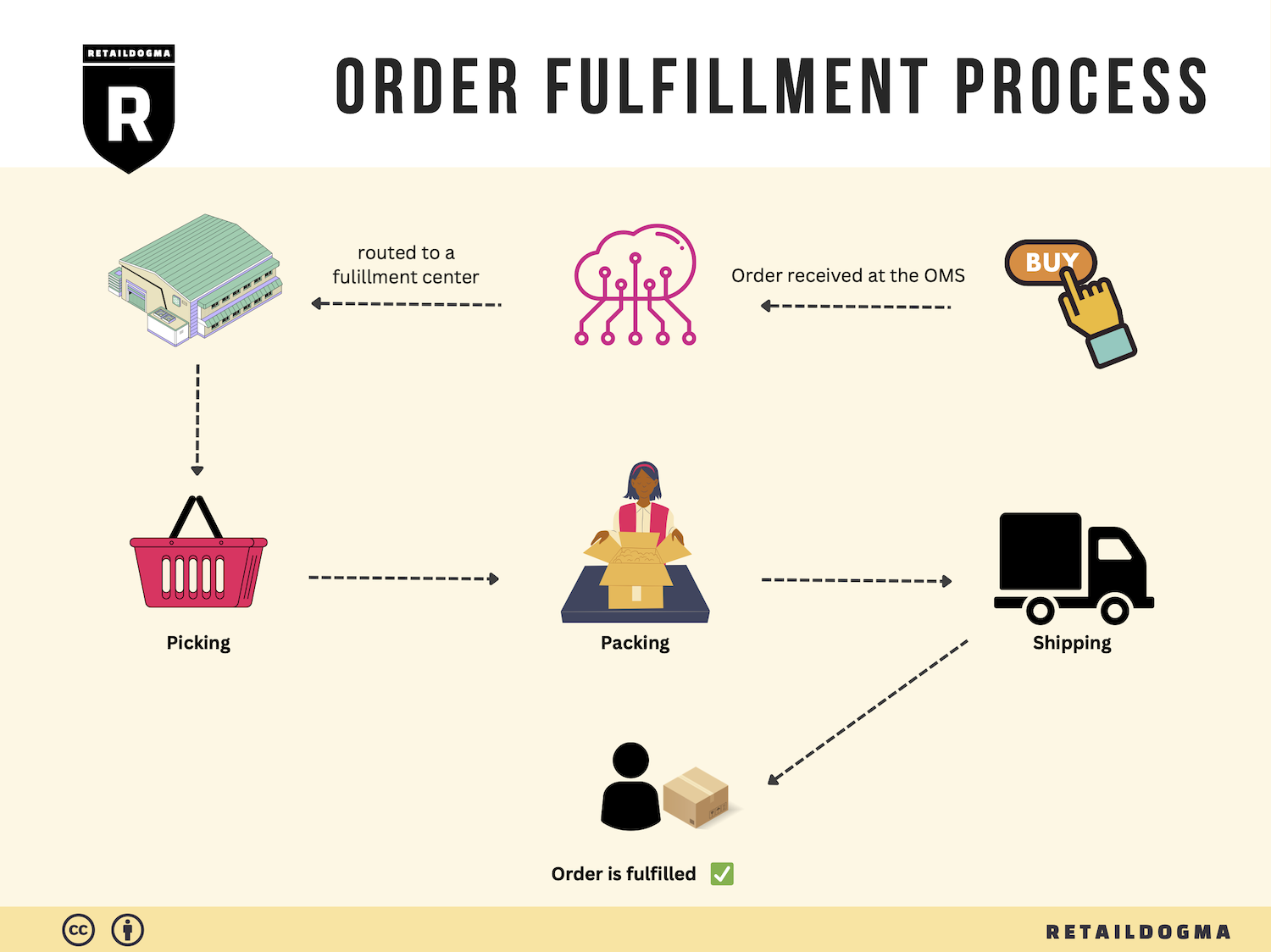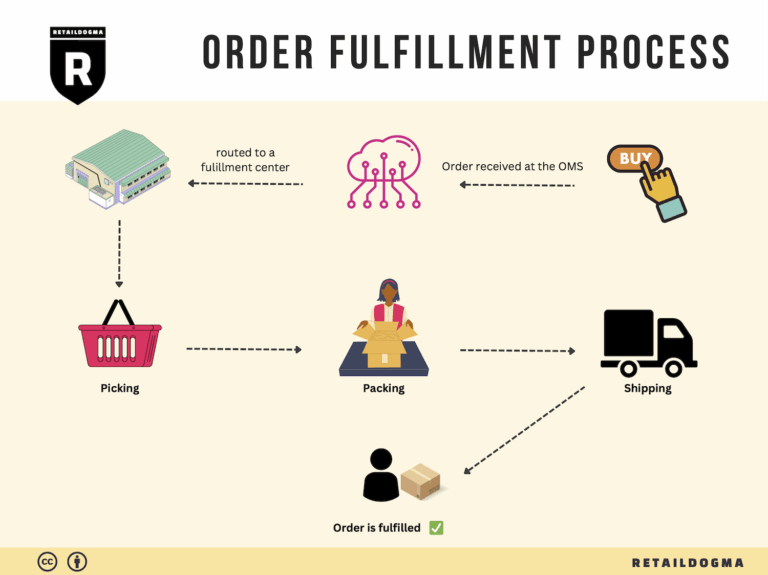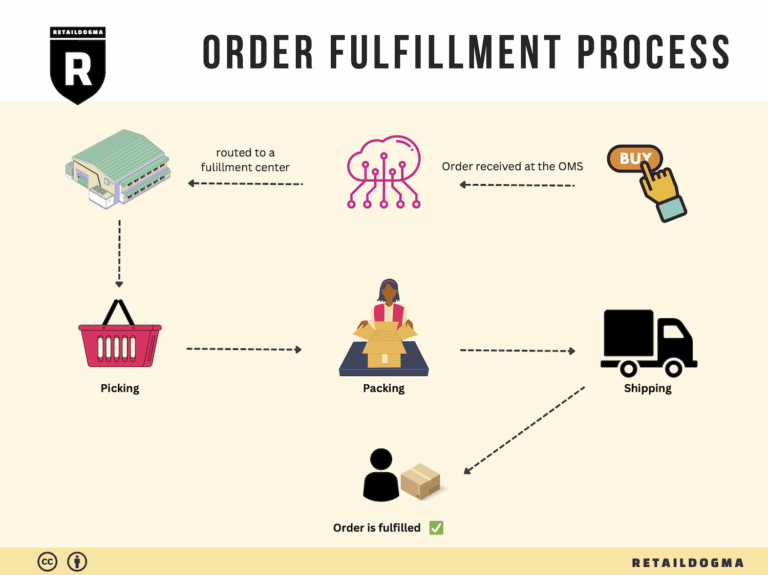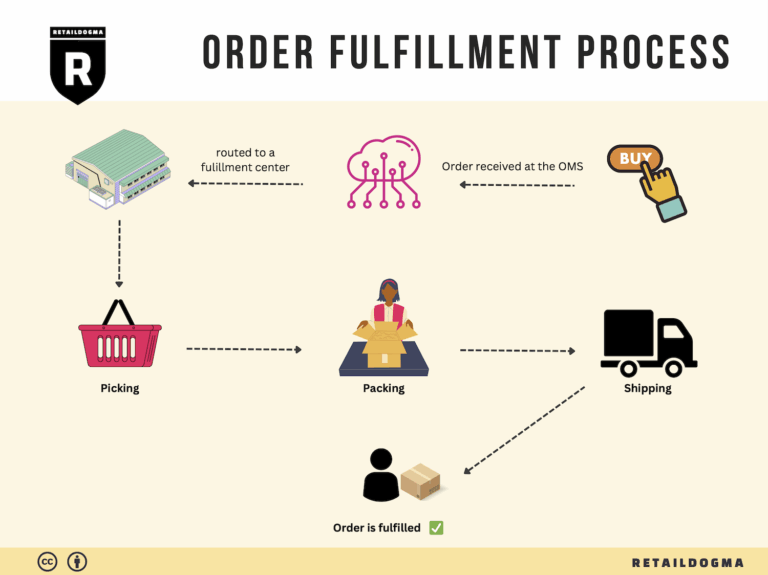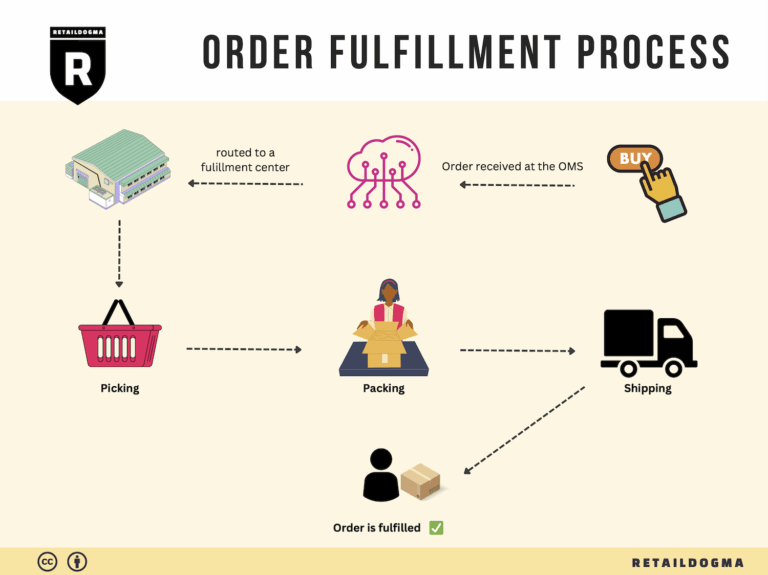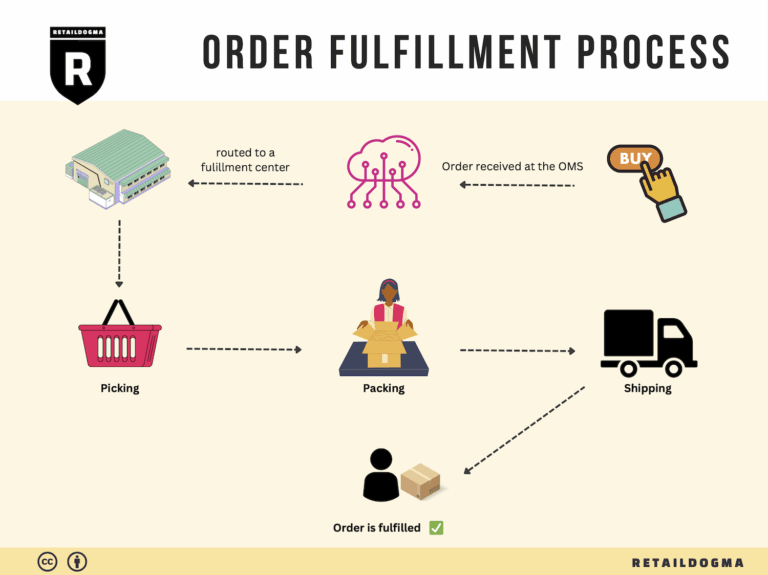Ecommerce Fulfillment Services: The Ultimate Guide (2025)
What is E-commerce Fulfillment? An Introduction for Growing Businesses
Understanding E-commerce Fulfillment
As your e-commerce business grows, so does the complexity of managing orders, packing, and shipping. Many entrepreneurs find themselves overwhelmed by the increasing volume of orders, struggling with the logistics of getting products to customers on time. This is where e-commerce fulfillment comes into play—a crucial element of your business’s success. Simply put, fulfillment is the process of getting a product from your inventory to your customer’s doorstep. It encompasses everything from inventory management to order processing, packing, and shipping.
In this guide, we will delve into the various models of e-commerce fulfillment that can streamline your operations and enhance customer satisfaction. We will explore options like Third-Party Logistics (3PL) and Fulfillment by Amazon (FBA), each offering unique advantages tailored to different business needs. Understanding these models is essential for selecting the right approach that aligns with your growth strategy.
We’ll also cover the core services involved in e-commerce fulfillment. These services include inventory storage, order processing, packing, shipping, and returns management. Each service plays a vital role in ensuring that your customers receive their orders accurately and promptly, which is crucial for maintaining a positive reputation and driving repeat business.
Choosing the right fulfillment partner is another critical decision that can significantly impact your operations. We’ll provide guidance on what to look for in a fulfillment partner, including factors like technology integration, scalability, and customer service. A well-chosen partner can help you navigate the complexities of logistics, allowing you to focus on other aspects of your business.
Finally, we’ll discuss pricing models and how to assess the costs associated with different fulfillment options. Understanding the financial implications will help you make informed decisions that support both your budget and your growth objectives.
Our goal with this guide is to empower you as a business owner or operations manager to make smart, strategic decisions about your logistics. By mastering e-commerce fulfillment, you can improve efficiency, enhance customer satisfaction, and ultimately drive sales growth. Whether you’re just starting or looking to scale, understanding these fundamentals will set you on the path to success.
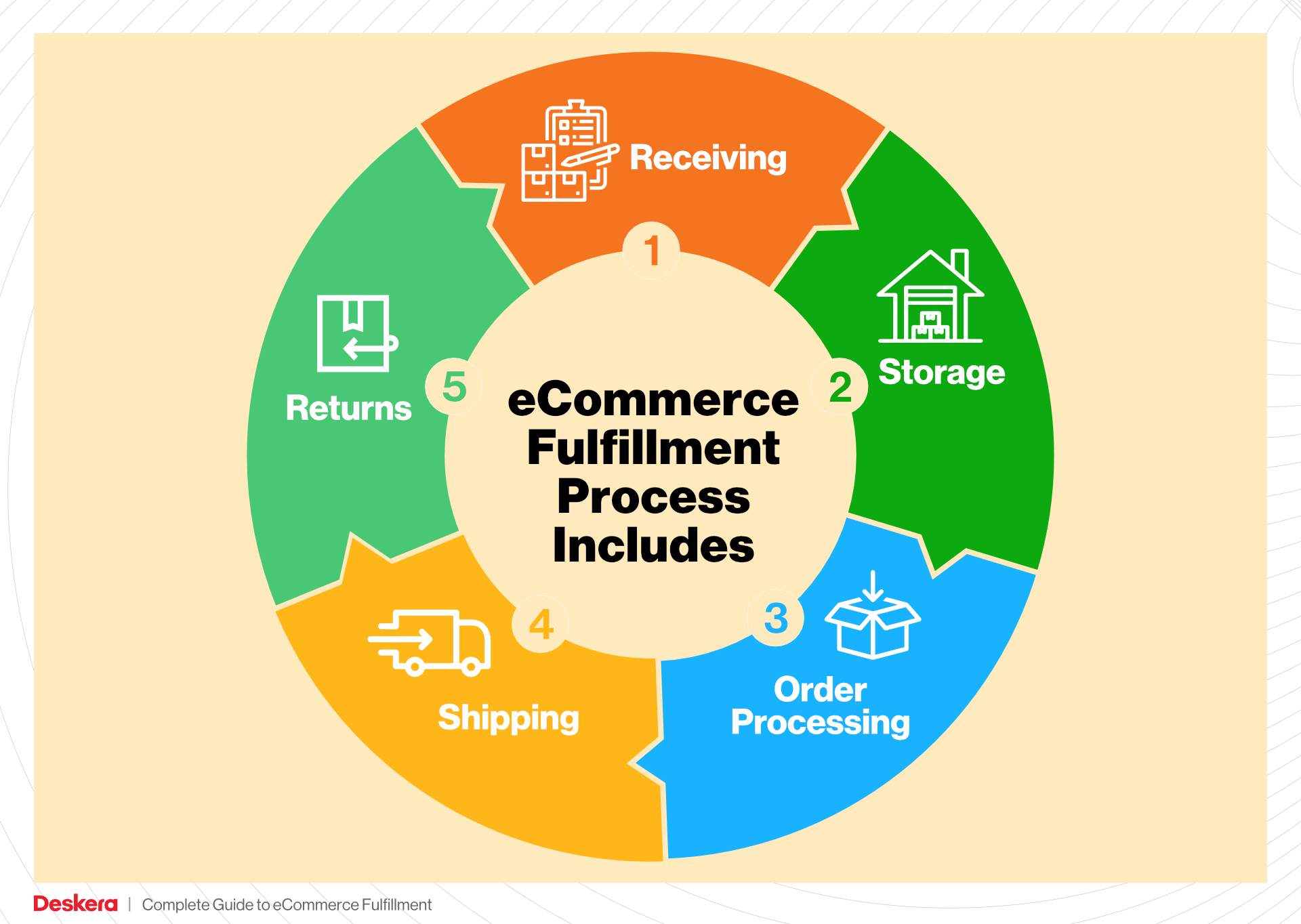
What You’ll Learn In This Guide
- What is E-commerce Fulfillment? An Introduction for Growing Businesses
- The Order Fulfillment Process: From ‘Buy’ Button to Customer’s Door
- Comparing Fulfillment Models: In-House vs. 3PL vs. Dropshipping
- A Deep Dive into Amazon FBA: Pros, Cons, and Who It’s For
- Core Services Offered by Fulfillment Centers
- How to Choose a Fulfillment Partner: A 6-Point Checklist
- Understanding Fulfillment Pricing: A Breakdown of Common Fees
- Frequently Asked Questions (FAQs) about Fulfillment
- Conclusion: Is Outsourcing Fulfillment the Right Move for Your Business?
- Important Disclaimer
The Order Fulfillment Process: From ‘Buy’ Button to Customer’s Door
1. Receiving Inventory
The order fulfillment process begins with receiving inventory at the fulfillment center. When products arrive, they are unloaded and checked against purchase orders to ensure accuracy in quantity and quality. This step is crucial as it sets the foundation for all subsequent operations. Any discrepancies can lead to inventory shortages or overages, affecting customer satisfaction and operational efficiency.
During the receiving process, items are assigned a Stock Keeping Unit (SKU), a unique identifier that helps track products throughout the supply chain. Properly managing SKUs ensures that inventory levels are accurately recorded, facilitating better inventory control and forecasting.
2. Warehouse Storage
Once received, products are stored in designated areas within the warehouse. The layout of the storage area is designed to optimize space and streamline access to frequently ordered items. Efficient warehouse storage is important because it directly influences the speed and accuracy of the order fulfillment process.
Products are typically organized using a combination of fixed and dynamic storage systems, allowing for flexibility based on demand. Utilizing advanced warehouse management systems (WMS) can enhance storage strategies by providing real-time data on inventory levels and locations, which is essential for efficient operations.
3. Order Picking
As customer orders are placed, the next step is order picking, where items are retrieved from storage based on the specific requests. This is a critical phase of the fulfillment process, as the accuracy of order picking directly impacts customer satisfaction. Errors in picking can lead to incorrect shipments, resulting in returns and lost trust.
To facilitate efficient picking, companies often utilize pick lists, which detail the items and quantities needed for each order. There are various picking methods, including single order picking and batch picking, each suited to different operational scales and order volumes. Implementing automated picking technologies, such as robots or conveyor systems, can further enhance efficiency and accuracy.
4. Order Packing
After items are picked, they move to the packing station, where they are prepared for shipment. Proper packing is vital to protect products during transit and to ensure they arrive in excellent condition. This step involves selecting appropriate packaging materials and methods based on the nature of the products being shipped.
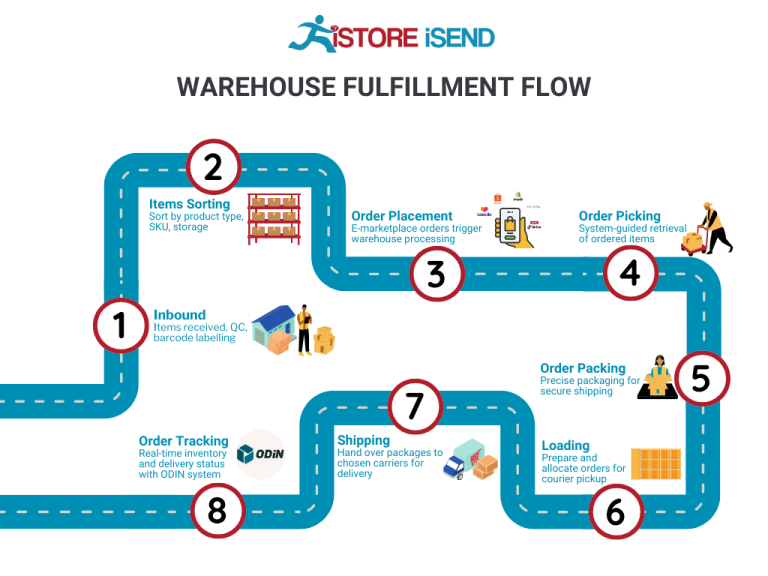
During packing, items are often checked against the order to confirm that the correct products are included. Key performance indicators (KPIs) for this stage include packing accuracy and speed. Utilizing packing automation can help streamline this process, reducing labor costs and improving packing efficiency. Additionally, incorporating sustainable packing solutions can enhance brand reputation and appeal to environmentally conscious consumers.
5. Shipping & Delivery
The final step in the order fulfillment process is shipping and delivery. Once packed, orders are labeled and sorted based on their destination. This step is crucial as it determines how quickly and efficiently products reach customers. The choice of shipping carriers and methods can significantly impact delivery times and costs.
Tracking systems are essential in this phase, providing customers with visibility into their order status. Efficient shipping logistics not only enhance customer satisfaction but also contribute to lower operational costs. Businesses should consider leveraging data analytics to optimize shipping routes and methods, ensuring timely delivery while minimizing expenses.
In conclusion, understanding and effectively managing each step of the order fulfillment process is essential for e-commerce businesses aiming to scale operations. By focusing on accuracy, efficiency, and customer satisfaction throughout these steps, businesses can improve their overall fulfillment performance and drive growth in a competitive marketplace.
Comparing Fulfillment Models: In-House vs. 3PL vs. Dropshipping
Fulfillment Model Comparison
| Model | Who Handles Inventory | Best For (Business Stage) | Key Advantage | Key Disadvantage |
|---|---|---|---|---|
| In-House Fulfillment | Business owns and manages inventory | Established businesses | Greater control over operations and branding | High overhead costs and resource intensity |
| Third-Party Logistics (3PL) | 3PL provider manages inventory | Growing businesses | Scalability and flexibility | Less control over fulfillment processes |
| Dropshipping | Supplier manages inventory | Startups and small businesses | Low startup costs and reduced risk | Lower profit margins and reliance on suppliers |
In-House Fulfillment
In-house fulfillment involves managing your own inventory and logistics operations. This model is typically adopted by established businesses that have the resources and volume to justify the investment in warehousing, staffing, and technology. The key advantage of in-house fulfillment is the greater control it offers over the entire supply chain process. Businesses can implement their own quality standards, customize packaging, and maintain direct oversight of inventory management. This can enhance customer experience and brand loyalty, as customers may appreciate the personalized touch.
However, in-house fulfillment comes with significant challenges. The overhead costs can be substantial, encompassing rent or ownership of warehouse space, utilities, labor, and technology investments. Additionally, as order volumes fluctuate, businesses may face inefficiencies, such as underutilized warehouse space during slow periods or strain on resources during peak seasons. This resource intensity requires careful planning and management, which can detract from core business activities.
Third-Party Logistics (3PL)
Third-party logistics (3PL) providers offer outsourced logistics services that encompass a range of activities, including warehousing, inventory management, and transportation. This model is ideal for growing businesses that need to scale their operations without the upfront investment associated with in-house logistics. By leveraging a 3PL, businesses can access advanced logistics technology, expertise, and a network of distribution channels that may be cost-prohibitive to build independently.
One of the primary advantages of using a 3PL is scalability. Businesses can quickly adapt to changing market conditions, adding or reducing inventory space and logistics services as needed. This flexibility can be particularly beneficial during seasonal peaks or unexpected demand surges. However, the downside is a potential loss of control over the fulfillment process. Relying on an external provider means less oversight, which can lead to discrepancies in service quality, inventory accuracy, and customer satisfaction. Businesses must thoroughly vet potential 3PL partners to ensure alignment with their operational standards and customer expectations.
Dropshipping
Dropshipping is a fulfillment model where the retailer does not hold inventory but instead transfers customer orders directly to a supplier, who then ships the products directly to the customer. This model is particularly appealing for startups and small businesses with limited capital, as it eliminates the need for inventory investment and reduces financial risk. By avoiding the costs associated with warehousing and order fulfillment, businesses can focus on marketing and sales strategies.

The main advantage of dropshipping is the low startup cost and the ability to offer a wide variety of products without the overhead associated with inventory management. This model allows entrepreneurs to test new products and markets with minimal financial commitment. However, dropshipping also presents challenges, including lower profit margins due to reliance on suppliers for pricing and shipping. Additionally, the retailer has little control over the shipping process, which can lead to inconsistencies in customer experience, such as delays or errors in order fulfillment. This reliance on third-party suppliers necessitates careful selection and ongoing communication to maintain a positive customer experience.
Conclusion
Choosing the right fulfillment model is crucial for e-commerce businesses looking to scale effectively. Each model—In-House Fulfillment, Third-Party Logistics, and Dropshipping—offers unique advantages and disadvantages that can significantly impact operational efficiency, customer satisfaction, and overall profitability. As businesses evaluate their options, they must consider their current stage of growth, available resources, and long-term strategic goals to determine which fulfillment model aligns best with their vision for success.
A Deep Dive into Amazon FBA: Pros, Cons, and Who It’s For
Understanding Fulfillment by Amazon (FBA)
Fulfillment by Amazon (FBA) is a service offered by Amazon that allows sellers to store their products in Amazon’s fulfillment centers. Once a customer places an order, Amazon takes care of storage, packaging, shipping, and customer service on behalf of the seller. This service is particularly beneficial for e-commerce businesses looking to streamline their operations and reach a wider audience.
How FBA Works
-
Product Listing: Sellers first create product listings on Amazon and choose the FBA option. They can either create new listings or convert existing ones to FBA.
-
Inventory Shipment: Sellers send their products to Amazon’s fulfillment centers. Amazon provides guidelines on how to prepare and package the products for shipment.
-
Storage: Once the products arrive at the fulfillment center, they are stored until sold. Amazon handles inventory management and keeps track of stock levels.
-
Order Fulfillment: When a customer orders a product, Amazon picks, packs, and ships the item directly to the customer. This process is facilitated by advanced automation and robotics within Amazon’s fulfillment centers, such as the new facility in Shreveport, which employs state-of-the-art technology to optimize logistics.
-
Customer Service: Amazon manages all customer service inquiries and returns related to FBA orders, allowing sellers to focus on other aspects of their business.
-
Fees: Sellers pay fees for storage and fulfillment, which vary based on the size and weight of the products. These fees are deducted from the seller’s account when a sale occurs.
Pros of FBA
-
Prime Eligibility: Products fulfilled through FBA automatically qualify for Amazon Prime, making them more attractive to millions of Prime members who prefer faster shipping options.
-
Customer Trust: Leveraging Amazon’s reputation can enhance customer trust. Shoppers are more likely to purchase from sellers using FBA due to Amazon’s established customer service and return policies.
-
Multi-Channel Fulfillment: FBA is not limited to Amazon sales. Sellers can use FBA to fulfill orders from their own websites or other platforms, providing a cohesive logistics solution.
-
Scalability: As businesses grow, FBA allows sellers to scale without the hassle of managing their own warehousing and logistics. Amazon’s infrastructure can handle increased order volumes seamlessly.
-
Reduced Operational Burden: FBA allows sellers to focus on other essential aspects of their business, such as marketing and product development, while Amazon manages fulfillment and customer service.
-
Access to Advanced Tools: FBA users benefit from Amazon’s advanced tools and analytics to manage inventory, sales, and performance metrics effectively.
Cons of FBA
-
High Fees: While FBA can simplify logistics, the associated fees can be significant. Sellers pay for storage space and fulfillment, which can cut into profit margins, particularly for low-cost items.
-
Strict Inventory Rules: Amazon has specific requirements regarding inventory management, including labeling and preparation rules. Failure to comply can result in additional fees or inventory being returned to the seller.
-
Commingling Risks: FBA products are stored in a shared environment, which means that sellers’ products may be mixed with those of other sellers. This can create challenges if a product is returned or if there are quality issues, as it may be difficult to ascertain the source of the problem.
-
Limited Control: By using FBA, sellers relinquish some control over their inventory and fulfillment process. Issues such as stockouts or order fulfillment errors may be out of the seller’s hands.
-
Long-Term Storage Fees: Products that do not sell within a certain timeframe can incur long-term storage fees, making it essential for sellers to monitor inventory levels and turnover rates closely.
-
Complex Fee Structure: Understanding the fee structure can be challenging, especially for new sellers. It is crucial to analyze potential costs to ensure profitability when using FBA.
Who is FBA Best For?
FBA is particularly advantageous for:
-
Small to Medium-Sized Businesses: Those looking to scale their operations without the overhead of managing their own warehouses and logistics can benefit greatly from FBA.
-
E-commerce Startups: New sellers can leverage Amazon’s vast customer base and fulfillment network to establish their presence in the market quickly.
-
Sellers with High Volume: Businesses that anticipate high sales volume and require efficient order fulfillment can take advantage of Amazon’s infrastructure.
-
Brands Seeking Prime Access: Companies aiming to target Amazon Prime members and increase their product visibility will find FBA to be a valuable asset.
-
Multi-Channel Sellers: Businesses that sell on multiple platforms can use FBA to streamline their fulfillment process, providing a consistent experience across channels.
In conclusion, Fulfillment by Amazon presents both significant opportunities and challenges for e-commerce businesses. While it can enhance efficiency and customer satisfaction, it is essential for sellers to carefully evaluate the associated costs and operational implications to determine if it aligns with their business goals.
Core Services Offered by Fulfillment Centers
Inventory Management & Warehousing
Fulfillment centers serve as critical hubs for e-commerce businesses, primarily by providing comprehensive inventory management and warehousing services. This entails the storage of products in a secure, organized environment, ensuring that items are readily available when orders are placed.
What It Is: Inventory management involves tracking stock levels, managing reordering processes, and maintaining accurate records of all products stored within the facility. Advanced technologies, such as automated inventory systems and AI-driven analytics, allow fulfillment centers to optimize stock levels based on real-time demand forecasting.
Benefits to E-Commerce Businesses: By leveraging sophisticated inventory management systems, e-commerce businesses can minimize stockouts and overstock situations, which are detrimental to cash flow and customer satisfaction. Efficient warehousing reduces the time products spend in storage, thus decreasing holding costs. Furthermore, accurate inventory tracking helps prevent discrepancies and enables better decision-making regarding product offerings and seasonal trends. This foundational service is essential for maintaining a competitive edge in the fast-paced e-commerce landscape.
Pick and Pack Services
The pick and pack process is a fundamental operation within fulfillment centers, directly impacting the speed and accuracy of order fulfillment.
What It Is: This service involves selecting items from inventory (picking) based on customer orders and then packaging them appropriately for shipment (packing). Advanced fulfillment centers, like the one in Shreveport, utilize robotic assistance to enhance the efficiency and accuracy of this process.
Benefits to E-Commerce Businesses: Efficient pick and pack services significantly reduce order processing times, which is critical for maintaining customer satisfaction in an era where quick delivery is expected. By automating parts of this process, fulfillment centers can minimize human error and ensure that the right products reach customers on time. Additionally, streamlined packing processes can optimize shipping costs by reducing package size and weight, ultimately lowering overall operational costs for e-commerce businesses.
Kitting and Assembly
Kitting and assembly services are essential for businesses that sell products that require bundling or assembly before they can be shipped.
What It Is: Kitting involves grouping multiple products together into a single package for sale, while assembly refers to putting together components to create a finished product. Fulfillment centers often provide these services, allowing e-commerce businesses to offer bundled products or customized orders without needing to handle the logistics in-house.
Benefits to E-Commerce Businesses: These services enable businesses to enhance their product offerings and create value-added packages that can attract customers. For instance, a company selling electronics might offer a kit that includes accessories with the main product. This not only boosts sales but also increases customer satisfaction by providing convenience. Moreover, outsourcing kitting and assembly to fulfillment centers allows businesses to focus on their core competencies, such as marketing and product development, while ensuring efficient handling of complex orders.
Returns Management (Reverse Logistics)
Returns management, also known as reverse logistics, is an often-overlooked yet crucial service offered by fulfillment centers.
What It Is: This service encompasses the processes involved in handling returned goods, from the moment a product is sent back by a customer until it is either restocked, refurbished, or disposed of. Fulfillment centers implement systematic procedures for assessing returned items, processing refunds, and managing inventory adjustments.
Benefits to E-Commerce Businesses: An efficient returns management system can significantly enhance customer loyalty and satisfaction. By providing a seamless return experience, businesses can alleviate customer concerns about purchasing, knowing they can easily return items if necessary. Furthermore, effective handling of returns allows businesses to recover value from returned products, whether through resale, refurbishment, or recycling. This not only mitigates losses but also contributes to sustainability efforts, which are increasingly important to modern consumers.
In conclusion, partnering with a fulfillment center that offers these core services can empower e-commerce businesses to scale operations, improve customer experience, and enhance overall efficiency. By leveraging advanced technologies and streamlined processes, fulfillment centers can help businesses navigate the complexities of logistics, allowing them to focus on growth and innovation.
How to Choose a Fulfillment Partner: A 6-Point Checklist
Location & Warehouse Network
Importance: The geographic location of your fulfillment partner’s warehouses can significantly impact shipping times and costs. A partner with a well-distributed network can help you reach your customers faster and more economically.
Questions to Ask:
– Where are your warehouses located, and how does this align with my customer base?
– How many fulfillment centers do you operate, and are they strategically placed for optimized shipping?
– What is your average shipping time to major metropolitan areas?
– Do you have a plan for expanding your warehouse network in the future?
Technology & Integrations
Importance: In today’s e-commerce landscape, technology plays a crucial role in efficiency and accuracy. Your fulfillment partner should use advanced technology that integrates seamlessly with your existing systems to streamline operations.
Questions to Ask:
– What warehouse management system (WMS) do you use, and how does it benefit your operations?
– Are you able to integrate with my e-commerce platform (e.g., Shopify, WooCommerce, Amazon)?
– What kind of tracking and reporting capabilities do you offer for inventory and order management?
– How do you handle technology updates, and what is your approach to data security?
Specializations (e.g., Cold Storage, Oversized Items)
Importance: Depending on your product range, you may need a fulfillment partner that specializes in certain areas such as cold storage for perishables or handling oversized items. Understanding these capabilities can help you make an informed choice.
Questions to Ask:
– What types of products do you specialize in fulfilling?
– Do you have specific facilities for temperature-sensitive items?
– How do you handle unique packaging requirements for oversized or fragile products?
– Can you accommodate seasonal fluctuations in product types or volumes?
Scalability & Capacity
Importance: As your business grows, your fulfillment needs will change. A partner that can scale with you, whether in terms of volume or service offerings, will be invaluable for your long-term success.
Questions to Ask:
– What is your current capacity, and how do you manage peak seasons?
– How quickly can you ramp up operations if my order volume increases?
– Do you have contingency plans for unexpected surges in demand?
– Can you provide case studies or examples of how you have scaled for other clients?
Pricing and Contracts
Importance: Understanding the cost structure of your fulfillment partner is crucial for budgeting and profitability. Transparency in pricing and contract terms can prevent unexpected expenses and ensure that your partnership is mutually beneficial.
Questions to Ask:
– What is your pricing model (e.g., per order, per item, monthly fees)?
– Are there any hidden fees I should be aware of (e.g., storage, picking, shipping)?
– What are the terms of your contracts, and how flexible are they?
– Can you provide a detailed breakdown of costs associated with your services?
Customer Support & Reviews
Importance: Excellent customer support can make a significant difference in your fulfillment experience. A partner that is responsive and reliable can help you resolve issues quickly, ensuring smooth operations.
Questions to Ask:
– What customer support channels do you offer (e.g., phone, email, live chat)?
– What are your response times for support inquiries?
– Can you provide references or reviews from current or past clients?
– How do you handle complaints or issues that arise during the fulfillment process?
Conclusion
Choosing the right fulfillment partner is a critical decision that can impact your business’s efficiency, customer satisfaction, and bottom line. By thoroughly evaluating potential partners against this checklist, you can make an informed choice that aligns with your operational needs and growth ambitions. Remember, the right partner will not only help you streamline your logistics but also contribute to your overall business strategy and success.
Understanding Fulfillment Pricing: A Breakdown of Common Fees
Initial Setup Fees
Initial setup fees are the charges incurred when you first engage with a fulfillment center. These fees cover the costs associated with onboarding your products into their system, which typically includes account creation, software integration, and initial inventory setup. Depending on the fulfillment center, this fee can range from a few hundred to several thousand dollars, depending on the complexity of your operations and the volume of products being introduced.
To calculate these fees, fulfillment centers often consider factors such as the number of SKUs (Stock Keeping Units), the level of customization needed for your account, and the existing infrastructure. It’s essential to clarify what the setup fee includes—some centers may bundle services while others may charge separately for each component.
Receiving Fees
Receiving fees are charged when your products arrive at the fulfillment center. These fees cover the labor and resources required to unload, inspect, and enter your inventory into their system. Typically, these fees are calculated on a per-unit basis or by the hour for labor.
For example, a fulfillment center might charge $0.50 per item received or a flat rate for a pallet of goods. Factors influencing receiving fees include the volume of items, the complexity of the receiving process (e.g., sorting or repackaging), and whether any special handling is required. Understanding these costs can help you budget effectively and negotiate better terms.
Storage Fees (per pallet/bin)
Storage fees are charged for the space your products occupy in the fulfillment center. These fees are typically calculated on a per pallet or per bin basis and can vary depending on the duration of storage. Most fulfillment centers have a monthly fee structure, but they may also charge additional fees for long-term storage, which usually applies after a product has been in the warehouse for six months or longer.
For instance, a center may charge $20 per pallet per month. It’s crucial to keep track of your inventory turnover rates to minimize storage costs. Businesses with slower-moving inventory should consider strategies to either promote sales or negotiate more favorable storage terms to reduce expenses.
Pick & Pack Fees (per item/order)
Pick and pack fees are incurred every time an order is processed. This involves selecting the items from storage, packing them into shipping boxes, and preparing them for shipment. These fees are typically charged per item or per order, depending on the fulfillment center’s pricing model.
For example, a common fee structure might involve a $1.00 fee for picking each item and an additional $0.50 for packing. Some fulfillment centers offer tiered pricing where the cost per item decreases as order volumes increase. This can be advantageous for businesses that scale quickly. Understanding the pick and pack process and associated fees allows businesses to strategize their order fulfillment to minimize costs.
Shipping Fees
Shipping fees cover the cost of transporting packages from the fulfillment center to the customer. These fees can vary significantly based on factors such as package weight, dimensions, destination, and shipping speed (e.g., standard vs. expedited shipping). Many fulfillment centers pass their carrier fees directly to clients, which can include surcharges for fuel or remote area delivery.
To calculate shipping costs, fulfillment centers typically use a combination of carrier pricing tables and dimensional weight pricing. Understanding the specifics of how shipping fees are calculated can help you choose the right fulfillment partner and optimize your shipping strategies.
Tips for Getting an Accurate Quote
-
Provide Detailed Information: When requesting a quote, provide as much detail as possible about your products, including sizes, weights, and quantities. This information helps fulfillment centers give you a more accurate estimate.
-
Ask About All Fees: Ensure you inquire about all potential fees, including setup, receiving, storage, pick & pack, and shipping. Knowing all costs upfront can prevent surprises later.
-
Understand Volume Discounts: If your business plans to scale, discuss potential volume discounts. Many fulfillment centers offer better rates for larger order volumes or longer-term contracts.
-
Negotiate Terms: Don’t hesitate to negotiate terms and fees, especially if you have competitive quotes from other fulfillment centers.
-
Review Contract Details: Before signing a contract, carefully review all terms related to pricing, fees, and any penalties for changes in order volumes or storage durations.
By understanding these common fees and how they are calculated, e-commerce business owners can make informed decisions when choosing a fulfillment partner, ultimately leading to more efficient operations and improved profit margins.
Frequently Asked Questions (FAQs) about Fulfillment
1. What is the Amazon fulfillment center in Shreveport?
The Amazon fulfillment center in Shreveport, designated as SHV1, is a state-of-the-art facility that spans over 3 million square feet and is equipped with advanced robotics and automation technologies. It serves as a critical hub in Amazon’s logistics network, handling the sorting, packaging, and shipping of millions of packages weekly.
2. How does automation benefit the Shreveport fulfillment center?
Automation at the Shreveport fulfillment center enhances efficiency and safety. The use of robots, such as the Sequoia system and various AI-powered robotic arms, reduces the manual workload on employees, allowing them to focus on ergonomically safe tasks. This not only speeds up the fulfillment process but also minimizes the risk of workplace injuries.
3. What is the capacity of the Shreveport fulfillment center?
The Shreveport fulfillment center can hold over 30 million items, making it one of the largest facilities in Amazon’s network. This capacity allows for efficient storage and quick retrieval of products, enabling faster shipping times to customers.
4. What types of jobs are available at the Shreveport fulfillment center?
The facility is expected to employ around 2,500 workers, offering a range of positions from warehouse associates to roles in maintenance, engineering, and robotics. Employees also have access to Amazon’s Career Choice program, which supports skill development and training for advanced positions.
5. How does the Shreveport fulfillment center fit into the supply chain?
The Shreveport fulfillment center acts as the “first mile” in Amazon’s logistics network, serving as the initial point for package sorting and preparation before items are shipped to “middle mile” centers and delivery service providers. This strategic location helps streamline the flow of goods to customers.
6. What is the difference between a warehouse and a fulfillment center?
While both warehouses and fulfillment centers store products, their functions differ. A warehouse primarily focuses on storage, whereas a fulfillment center is dedicated to processing orders, including picking, packing, and shipping products directly to customers. Fulfillment centers are often more integrated with e-commerce operations.
7. What is a third-party logistics provider (3PL)?
A third-party logistics provider (3PL) is a company that offers outsourced logistics services to businesses. This can include transportation, warehousing, inventory management, and fulfillment services. Utilizing a 3PL allows businesses to focus on their core operations while leveraging the expertise and resources of specialized logistics providers.
8. How much do fulfillment services cost?
Fulfillment service costs can vary widely based on factors such as order volume, storage needs, packaging requirements, and shipping destinations. Generally, costs are structured around storage fees (per pallet or cubic foot), picking and packing fees (per order), and shipping fees (based on weight and distance). It’s essential for businesses to evaluate their specific needs to get accurate quotes from fulfillment providers.
9. What are the sustainability practices at the Shreveport fulfillment center?
The Shreveport fulfillment center emphasizes sustainability by optimizing packaging materials, replacing plastics with recyclable paper solutions, and aiming for a 25% reduction in operating costs during peak seasons. These practices not only reduce waste but also contribute to Amazon’s broader commitment to environmental responsibility.
10. How does the Shreveport fulfillment center impact the local economy?
The establishment of the Shreveport fulfillment center is expected to have a positive impact on the local economy by creating approximately 2,500 jobs and fostering community engagement through partnerships and initiatives. This influx of employment opportunities can stimulate local businesses and contribute to economic growth in the region.
Conclusion: Is Outsourcing Fulfillment the Right Move for Your Business?
Evaluating the Benefits of Outsourcing Fulfillment
As e-commerce continues to evolve, many businesses are faced with the critical decision of whether to manage fulfillment in-house or to outsource this function. Utilizing a fulfillment service can yield significant advantages, including time savings, scalability, and access to specialized expertise. By outsourcing fulfillment, you can free up valuable time that can be redirected towards strategic growth initiatives, marketing, and customer engagement. This allows you to focus on what matters most: scaling your business.
Moreover, fulfillment services provide the flexibility to scale operations in line with demand fluctuations. For instance, during peak seasons, partnering with a robust fulfillment center like Amazon’s state-of-the-art facility in Shreveport can help manage increased order volumes efficiently. These centers leverage advanced technology, such as robotics and AI, to streamline processes and enhance accuracy, ensuring that your customers receive their orders promptly and reliably.
However, the success of outsourcing fulfillment hinges on selecting the right partner. It’s crucial to evaluate potential partners based on their infrastructure, technology capabilities, and alignment with your business goals. A strategic partner should not only support your current needs but also be equipped to grow alongside your business.
Call to Action
To determine if outsourcing fulfillment is the right move for your business, consider conducting a thorough audit of your current shipping processes. Assess your operational efficiency, costs, and customer satisfaction levels. This analysis will help you identify pain points and opportunities for improvement. If you find that fulfillment is hindering your growth, it may be time to explore partnering with a fulfillment service that can help elevate your operations and enhance customer experience.
Important Disclaimer
⚠️ Important Disclaimer
The information in this guide is for educational purposes. Fulfillment services, pricing, and platform features change frequently. Always conduct your own due diligence and consult with providers directly before making business decisions.
